By Corey Fisher, Pulib Lands Policy Director What are national monuments and why should hunters and anglers care?
National monuments and the Antiquities Act have been in the news lately, with members of Congress pushing the Trump Administration to repeal some national monuments, and a renewed call in the halls of Congress to dismantle the act.
These discussions are usually somewhat abstract and exactly what a national monument is leaves many of us scratching our heads. But for sportsmen and women, there are a few things to know about national monuments and the act used to establish them:
- National monuments are created when a presidential issues a proclamation designating a national monument out of existing public lands. Signed into law by Theodore Roosevelt in 1906, sixteen U.S. presidents – eight Democrats and eight Republicans – have used the Antiquities Act to protect some of the nation’s best public land hunting and fishing opportunities. National monuments are not a “land grab” as some opponents erroneously claim; these lands are already owned American public.
- The Antiquities Act helps keep our public land like it is, preventing changes that would negatively impact our hunting and fishing heritage. Importantly, each proclamation designating a national monument is different, and each one identifies the values that are to be protected for that specific area, including fish, wildlife, and hunting and angling. For instance, the 2015 proclamation designating Berryessa Snow Mountain National Monument in California listed trout, salmon, steelhead, elk and mule deer as monument features and noted that the area is important for “recreation opportunities, including hunting, fishing”. In doing so, by law these values will be conserved.
- National Monuments protect quality hunting and fishing opportunities on public lands. Many monuments allow traditional uses to continue, including hunting and fishing; here’s a list. In short, uses that were allowed before a monument is created are typically allowed after a monument is created, while future activities would degrade fish and wildlife habitat – such as mining or oil and gas development – are not allowed except where there are already valid existing rights.
- The Antiquities Act is needed more today than ever. In today’s Congress, even widely supported, bi-partisan proposals can get wrapped up in unrelated political fights, but the Antiquities Act offers a path forward to see conservation initiatives through when Congress won’t act. For instance, Browns Canyon National Monuments in Colorado was designated in 2015 after over two decades of unsuccessful legislative proposals from both Republican and Democratic members of Colorado’s Congressional delegation. If the authority for a president to designate a monument were taken away, legislation to conserve Browns’ Canyon would still be languishing in Congress.
- In the West, national monuments are usually managed by a multiple use public land management agency, commonly the Forest Service or BLM. A designation typically doesn’t change who manages public lands, only what features will be conserved, such as fish and wildlife habitat. Importantly, modern monument proclamations explicitly state that fish and wildlife management authority will be retained by fish and wildlife management agencies, just as it was prior to designation.
- Monuments ensure the public has a voice in the management of their public lands. When developing a management plan, agencies are required to involve the public, including consultation with tribal, state, and local governments. The process for developing monument management plans is the same process used to create management plans for other public lands, with public input at the beginning of the process and a draft plan that is made available for review and comment before a final decision is made.
- Today, Congress is trying to dismantle this important tool. Congress has shown a renewed interest in repealing the act outright, or creating hurdles to monument designation that would render the act useless. One such bill in the Senate, S. 437, places a higher bar for the approval of monuments than Wilderness, even though national monuments are a far less restrictive designation.
- You can help. Theodore Roosevelt was the father of the Antiquities Act and it is critical that hunters and anglers speak up in support of this important tool for conservation – take action today and tell Congress don’t mess with Teddy’s law.






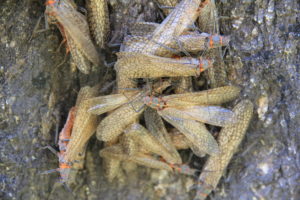 Parking lot to the River - Matching the hatch starts when you park the truck and continue on your way to the water's edge. While not the most appetizing script to read, plastered to your windshield and the grill of your car is a record of the bugs that were flying and hopping along the lake or river that you are planning to fish. The fragile wings of mayflies and sturdy grasshopper legs act like braille to the astute angler and are the first clues as to what flies they might fish that day. As you leave the parking lot and work your way down to the water, observe what is hopping and flying around you. Grasshoppers frantically leaping off the trail ahead of you, the wayward beetle landing on your shoulder, and the shrilling of the cicada, and caddis flies stirring into flight as you push through streamside trees are all indicators of food that might be falling or landing on the water.
Parking lot to the River - Matching the hatch starts when you park the truck and continue on your way to the water's edge. While not the most appetizing script to read, plastered to your windshield and the grill of your car is a record of the bugs that were flying and hopping along the lake or river that you are planning to fish. The fragile wings of mayflies and sturdy grasshopper legs act like braille to the astute angler and are the first clues as to what flies they might fish that day. As you leave the parking lot and work your way down to the water, observe what is hopping and flying around you. Grasshoppers frantically leaping off the trail ahead of you, the wayward beetle landing on your shoulder, and the shrilling of the cicada, and caddis flies stirring into flight as you push through streamside trees are all indicators of food that might be falling or landing on the water.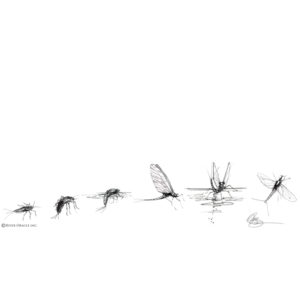 Under the Water - It is beneath the surface of the water that trout do 75% of their feeding, and that's where the angler's most important information will be found. Using an Invertebrate Seine along the streambed and pulling rocks from the current to observe what is holding onto their surface will give you a detailed menu of which bugs are most abundant, as well as their size and color so that you can lay your fly box alongside and choose the closest match.
Under the Water - It is beneath the surface of the water that trout do 75% of their feeding, and that's where the angler's most important information will be found. Using an Invertebrate Seine along the streambed and pulling rocks from the current to observe what is holding onto their surface will give you a detailed menu of which bugs are most abundant, as well as their size and color so that you can lay your fly box alongside and choose the closest match.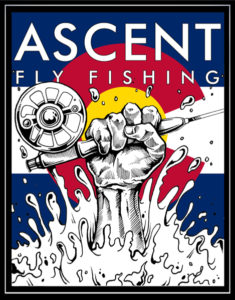
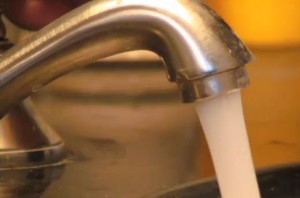 Recycle water:
Recycle water:

